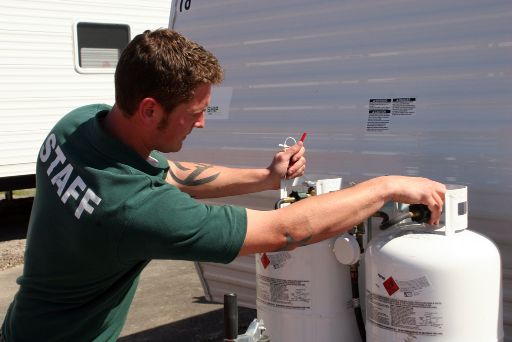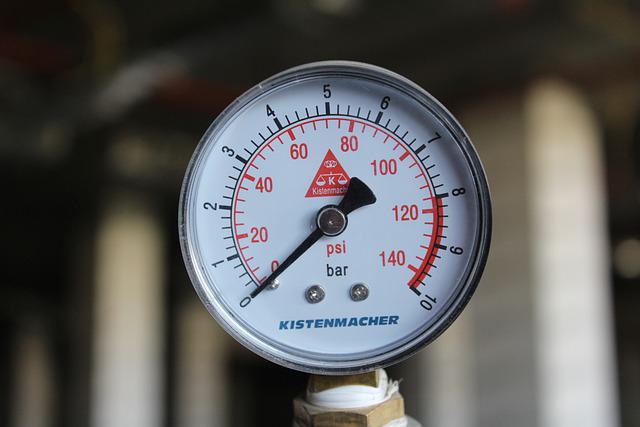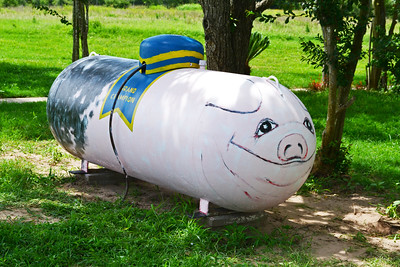
Are you curious about the difference between a propane gas tank and a propane cylinder?
You’re not alone! Many people use propane for various applications, from home heating to outdoor cooking, but understanding the differences between these two propane storage options can be a bit confusing.
In this comprehensive and detailed guide, we’ll explore the key differences between propane gas tanks and cylinders, so you can make informed decisions and optimize your propane usage.
We promise that by the end of this article, you’ll be a propane expert!
So, grab a cup of coffee and get comfy – we’re about to embark on an exciting journey through the fascinating world of propane storage.
The Differences
| Feature | Propane Gas Tank | Propane Cylinder |
|---|---|---|
| Material | Steel or composite materials | Steel or aluminum |
| Typical Lifespan | 20-30 years | 12-15 years |
| Refilling Frequency | Less frequent due to larger capacity | More frequent due to smaller capacity |
| Corrosion Resistance | Can corrode over time, especially if buried | Generally more resistant to corrosion |
| Space Requirements | Requires dedicated space for installation | Can be easily stored when not in use |
| Weather Impact | Can withstand extreme temperatures and weather conditions | May require additional protection in extreme weather |
| Mobility | Immobile, stationary storage | Mobile and portable storage |
| Purchase or Lease Options | Can be purchased outright or leased from a supplier | Usually purchased outright, some suppliers offer rentals |
| Emergency Shut-off Valve | Typically equipped with an emergency shut-off valve | Smaller cylinders may not have an emergency shut-off valve |
| Insurance Considerations | Homeowner’s insurance may be affected by tank installation | Typically does not affect insurance policies |
| Local Regulations and Permitting | May require permits and adherence to local regulations | Generally fewer regulations, but still subject to safety laws |
| Cost and Pricing Structure | Larger upfront cost, lower cost per gallon on refills | Lower upfront cost, higher cost per gallon on refills |
| Availability and Accessibility | Can be limited in some urban areas due to space restrictions | Widely available and easily accessible |
| Visual Impact | Can be visually obtrusive, especially above-ground tanks | Smaller and less visually noticeable |
| Maintenance and Servicing | Requires periodic maintenance by a professional | Minimal maintenance, but may need periodic recertification |
| Safety Precautions During Power Outages | Typically equipped with automatic shut-off during power outages | Manual shut-off may be required during power outages |
Propane Gas Tanks
Propane gas tanks are large, stationary containers designed to store propane fuel for long-term use. They are usually installed outdoors, either above ground or underground, and can hold anywhere from 50 to several thousand gallons of propane.
Propane gas tanks are primarily used for residential, commercial, and industrial applications where a consistent supply of propane is required.
One of the most common uses of propane gas tanks is residential heating and cooking. Many homes rely on propane gas tanks for heating, as well as for powering appliances such as stoves, ovens, and water heaters.
In industrial settings, propane gas tanks are commonly used to power equipment like forklifts, heaters, and generators.
Businesses and farms often use propane gas tanks for various purposes, such as space heating, crop drying, and even powering vehicles.
Propane gas tanks come in various sizes and capacities to accommodate different needs. Small tanks typically hold between 50 and 250 gallons, medium tanks range from 251 to 500 gallons, and large tanks can hold between 501 and 1000 gallons.
Extra-large tanks, which can store over 1000 gallons of propane, are often used for commercial and industrial applications that require a substantial amount of fuel.
When it comes to installation and safety requirements, propane gas tanks need to be placed a certain distance from buildings, property lines, and ignition sources. This is to minimize the risk of fire and ensure the safety of the surrounding area.
Periodic inspections and maintenance are crucial to keep propane gas tanks in good working condition and to prevent leaks. Leak detection and prevention systems are often installed alongside propane gas tanks to monitor for any issues.
One significant advantage of using propane gas tanks is their environmental impact and energy efficiency. Propane is a clean-burning fuel, producing fewer greenhouse gas emissions compared to other fossil fuels.
Additionally, propane is highly efficient, meaning that you’ll get more energy for the same amount of fuel compared to other sources.
Propane Cylinders
Propane cylinders are smaller, portable containers designed to store propane fuel for short-term use. They are typically made of steel or aluminum and are easily transportable, making them ideal for outdoor and recreational activities.
Propane cylinders are commonly used for portable heaters, BBQ grills and outdoor cooking appliances, and camping and recreational equipment.
Propane cylinders come in various sizes and capacities to suit different needs. Small cylinders typically hold between 20 and 30 pounds of propane, while medium cylinders can store between 33 and 100 pounds.
Large cylinders, which hold more than 100 pounds of propane, are often used for commercial purposes or large-scale events.
When transporting and storing propane cylinders, it’s essential to take proper safety precautions. Cylinders should always be handled with care and stored upright in a well-ventilated area, away from heat sources and ignition sources.
When transporting propane cylinders, they should be secured in an upright position to prevent tipping and damage. Regular inspections and recertification of cylinders are necessary to ensure their safety and compliance with regulations.
Many retailers and propane suppliers offer cylinder exchange programs and refilling options for customers. These programs allow users to exchange empty cylinders for full ones, making it easy to maintain a constant supply of propane for their needs.
Alternatively, some people choose to refill their cylinders at designated propane filling stations, which can be more cost-effective in the long run.
Key Differences between Propane Gas Tanks and Cylinders
Size and capacity are the most obvious differences between propane gas tanks and cylinders. Propane gas tanks are much larger and designed for long-term storage, while propane cylinders are smaller and intended for short-term use.
This difference in size and capacity directly impacts the intended uses and applications of these two propane storage options.
Propane gas tanks are commonly used for residential, commercial, and industrial applications that require a consistent supply of propane.
In contrast, propane cylinders are more suitable for portable and recreational uses, such as outdoor cooking, camping, and portable heating.
Installation and safety requirements also differ between propane gas tanks and cylinders. While propane gas tanks must be installed outdoors and adhere to specific placement and safety regulations, propane cylinders are more flexible and portable, with different safety precautions related to transportation and storage.
Storage and transportation considerations play a significant role in the choice between propane gas tanks and cylinders.
Propane gas tanks are stationary and require a dedicated space for installation, whereas propane cylinders can be easily transported and stored according to the user’s needs.
Finally, refilling and exchange options also vary between propane gas tanks and cylinders.
Propane gas tanks are typically refilled on-site by propane delivery trucks, while propane cylinders can be exchanged or refilled at designated filling stations and retailers.
Conclusion
Understanding the main differences between propane gas tanks and cylinders is essential for selecting the right propane storage option for your needs. While propane gas tanks are better suited for long-term, stationary applications, propane cylinders offer greater flexibility and portability for short-term uses.
By considering factors such as size, capacity, intended use, installation, safety requirements, and refilling options, you can make the best decision for your specific propane needs.
We hope this detailed guide has provided you with valuable insights into the world of propane storage, and that you now feel confident in making informed choices about your propane usage.
Remember to always follow safety guidelines and maintenance recommendations when using propane, whether in a gas tank or a cylinder. With the right knowledge and precautions, you can enjoy the many benefits of propane while keeping yourself and your environment safe.

Mike is an experienced propane technician with over 15 years of professional experience in the field. He has dedicated his career to helping customers with their propane needs, from installation to maintenance and repair. Together with Jeremy, he co-founded this website to provide useful information and guidance to customers seeking reliable propane services.




